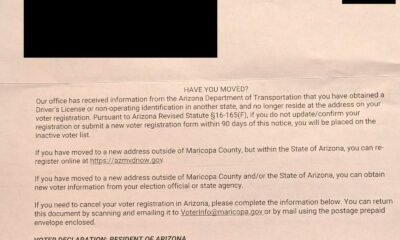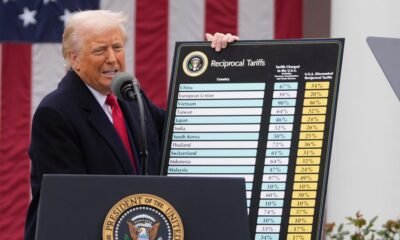Business
Trump Closes Department of Education: What Does This Mean for Maricopa Students?

MUSD’s Director of Communications, Mishell Terry, stated Monday that district leaders “remain focused on what matters most” following the recent shutdown of the Department of Education (DOE) ordered by President Trump. With the agency effectively disbanded, the future remains uncertain for Maricopa students, educators, and families.
Last Thursday, President Trump signed an executive order, initiating a significant shift in the U.S. education landscape. This move fulfills a long-standing Republican goal of transferring educational governance back to state and local jurisdictions.
The DOE, established as a cabinet-level agency in 1980, has been crucial in administering federal education funding and maintaining national education standards. Generations of students have known an education system supported by this federal entity, making its dissolution momentous.
In response to Trump’s directive, teachers unions have filed lawsuits, asserting that congressional approval is necessary for the closure. School leaders, particularly those in Maricopa, are beginning to assess potential impacts on their districts.
The Department of Education’s substantial $268 billion budget significantly influences districts nationwide. Control of nearly $1.6 trillion in student loans will shift to the Small Business Administration, while other federal departments will manage school nutrition and special education services.
Title I, a program benefiting low-income students, receives over $15 billion annually, which is critical for schools. Arizona, specifically, has relied heavily on these federal funds, receiving nearly $1 billion each year.
Education Secretary Linda McMahon defended the executive order in a recent interview, arguing that the DOE has become an unnecessary bureaucracy obstructing the flow of federal assistance to students. She emphasized the need for states to innovate in their educational approaches.
The educational community in Arizona is divided on the order’s implications. Arizona Superintendent Tom Horne expressed optimism, stating that the closure could alleviate federal red tape and redirect funds to essential areas, like teacher salaries. He is set on reassuring the public that key funding streams will remain intact.
Conversely, Marisol Garcia, president of the Arizona Education Association, raised concerns about the potential disruption of funding streams and job security for educators. At a rally attended by prominent figures, she highlighted how crucial federal funding is for vast numbers of students and educators in Arizona.
For Maricopa Unified School District, the uncertainty surrounding funding remains a pressing concern. MUSD relies heavily on federal support for key programs, including Title I and special education services. While there are reports of some funding being preserved, concrete plans for reassignment are not yet clear.
Mishell Terry emphasized the district’s commitment to its students and staff amidst the evolving situation. “We remain focused on what matters most — our students, staff, and families,” she remarked. As developments unfold, MUSD is collaborating with state and federal partners to navigate changes in funding and ensure essential services continue.


















